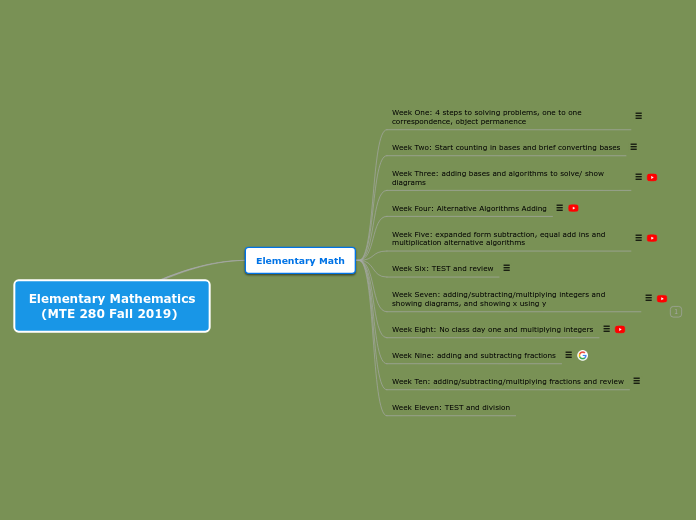Elementary Mathematics
(MTE 280 Fall 2019)
Elementary Math
Week One: 4 steps to solving problems, one to one correspondence, object permanence
Week Two: Start counting in bases and brief converting bases
Week Three: adding bases and algorithms to solve/ show diagrams
Week Four: Alternative Algorithms Adding
Week Five: expanded form subtraction, equal add ins and multiplication alternative algorithms
Week Six: TEST and review
Week Seven: adding/subtracting/multiplying integers and showing diagrams, and showing x using y
Week Eight: No class day one and multiplying integers
Week Nine: adding and subtracting fractions
Week Ten: adding/subtracting/multiplying fractions and review
Week Eleven: TEST and division
